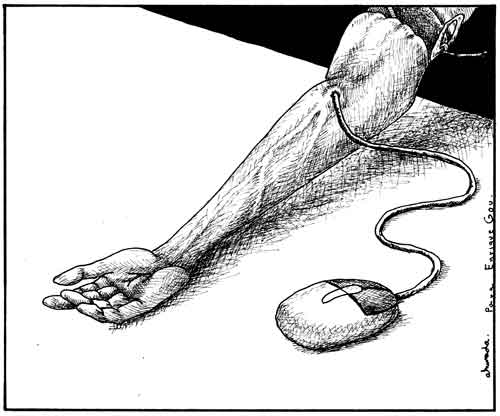Your Internet Addiction Can Get You A Stint In Rehab
 I’m hopelessly addicted to chapstick. I own at least a dozen tubes at any given time, but if I happen to forget one, I can’t stop thinking about it and my lips turn into the Sahara. As addictions go, it’s far from the worst. I could be hooked on crystal meth, or sex, or, god forbid, the internet. Pennsylvania’s Bradford Regional Medical Center will open an treatment program for Internet addicts next week.
I’m hopelessly addicted to chapstick. I own at least a dozen tubes at any given time, but if I happen to forget one, I can’t stop thinking about it and my lips turn into the Sahara. As addictions go, it’s far from the worst. I could be hooked on crystal meth, or sex, or, god forbid, the internet. Pennsylvania’s Bradford Regional Medical Center will open an treatment program for Internet addicts next week.
Part of the center’s Behavioral Health Services division, the program is a 10-day inpatient “digital treatment and stabilization program” designed for patients who are at least 18 and who have attempted unsuccessfully to curb their online urges themselves. When it opens, the program will only be able to accommodate four patients at a time. Considering the number of internet addicts out there, that number seems pretty tiny. Hey, I know—they could set up a online internet addiction treatment program that could serve countless people. Oh, wait…
The program starts with a 3-day “digital detox,” and includes all of the psychological work-ups one would expect from addiction counseling. Doctors in the program predict that the detox will trigger withdrawal in patients, and that, for some, the symptoms will be similar to those suffered by drug addicts. They expect to have to medicate many of the patients through the initial stages of the process.
But let’s talk about internet addiction for a minute. How would you define this term? Spending over three hours a day online? Check. Six? At least some days, check. Stumbling home drunk and inexplicably surfing the web while half-conscious? Check. Is this an addiction, or just the way things are now? Or both? The Bradford Regional program uses this definition: “any online-related, compulsive behavior which interferes with normal living and causes severe stress on family, friends, loved ones, and one’s work environment.”
Dr. Kimberly Young, director of the program, has been studying internet addiction and treatment since 1995. She had the idea of starting the program because of the number of phone calls she’s gotten over the years from patients desperate for help, but who had nowhere to turn. Countries such as China have begun to address the pervasive, ever growing problem, but the U.S. has been a little slow to get on the bandwagon. Probably because everyone was too busy screwing around online.
It’s tough to distinguish between an addiction and someone who simply spends oodles of time online each day. Many of us work online. The behavior has to be compulsive and disruptive to daily life in order to actually be classified as an addiction. The most recent version of the DSM-V, the psychology/psychiatry bible, mentions Internet Gaming Disorder, but doesn’t actually classify it as a formally recognized disorder. This is an important step in legitimizing internet addiction as a serious problem that warrants treatment. According to the DSM, the inclusion of Internet Gaming Disorder “opens discussions for other behavioral addictions…and strong empirical data will—and should be—required.” In other words, the topic is on the table, but if you’re hoping your insurance will cover your internet addiction treatment, you’re going to be disappointed. And out about $14,000.
For that price, you could just fly off to some remote island too primitive for Wi-Fi. Although in ten days, you just might figure out how to build a computer out of coconuts, Gilligan’s Island style.












